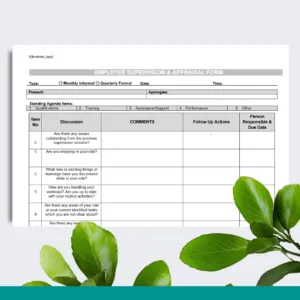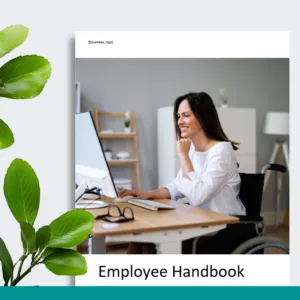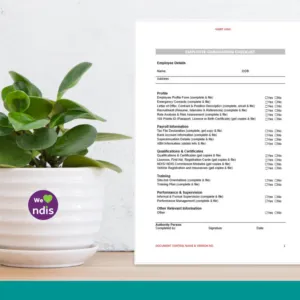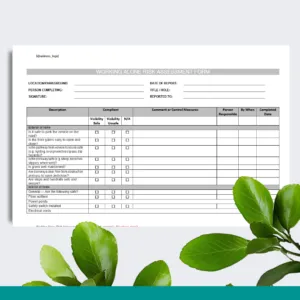NEW CHANGES - Sexual Harassment and Psychological Harm (QLD ONLY)
What is a Sexual Harassment Law Changes in QLD Only?
According to Safe Work Australia, sexual harassment or gender-based harassment refers to unwanted sexual behaviour that makes an individual feel intimidated, humiliated or offended when such reactions are reasonable. This can be a one-off, obvious, repeated or continuous between workers, supervisors and managers at all levels, as well as managing the risk of third-party sexual harassment from customers, clients and other.
This also incudes working with stakeholders such as workers, supervisors and managers at all levels, as well as customers, clients and others worker’s usual workplace, remotely, different location, work-related activities or events and by phone, email or online (such as through social media platforms).
Sexual Harassment Examples
- Unwelcome sexual advance,
- Unwelcome request for sexual favours or other
- Unwelcome conduct of a sexual nature, in circumstances where a reasonable person, having regard to all the circumstances, would anticipate the possibility that the person harassed would be offended, humiliated or intimidated.
- Unwelcome touching, hugging, cornering or kissing
- Inappropriate staring or leering
- Suggestive comments or jokes
- Using suggestive or sexualised nicknames for co-workers
- Sexually explicit pictures, posters or gifts
- Circulating sexually explicit material
- Persistent unwanted invitations to go out on dates
- Requests or pressure for sex
- Intrusive questions or comments about a person's private life or body
- Unnecessary familiarity, such as deliberately brushing up against a person
- Insults or taunts based on sex
- Sexual gestures or indecent exposure
- Following, watching or loitering nearby another person
- Sexually explicit or indecent physical contact
- Sexually explicit or indecent emails, phone calls, text messages or online interactions
- Repeated or inappropriate advances online
- Threatening to share intimate images or film without consent, and
- Actual or attempted rape or sexual assault.
- Indecent exposure
- Stalking
- Obscene or threatening communications (e.g. phone calls, letters, emails, text messages and posts on social media)
- Gendered violence targeted at someone because they identify as lesbian, gay, bisexual, transgender, intersex, queer or asexual (LGBTIQA+).
How do you implement this in your service?
Everyone has an obligation to conduct business within Policies and Procedures that prohibit sexual harassment. NDIS Sole Traders, Unregistered and Registered Providers across Australia must ensure;
- Understand, implement, review and train management, employees, volunteers, contractors, participants, guardians, WHS laws and Sex Discrimination Act 1984 in an appropriate method of communication.
- Understand, implement, review and train management, employees, volunteers, contractors, participants, guardians, Ndis Code of Conduct legislation in an appropriate method of communication and the policy and procedure of such.
- Consultant stakeholders, identify, assess, implement control measures and regularly review risks under Risk Management System including the policy and procedure of such.
- Implement and regularly review a robust service entry & exit, selection, recruitment, induction, orientation, supervision and performance system for all new & exiting management, employees, volunteers, contractors considering that some stakeholders may be more likely to experience sexual harassment because of their sex, gender, sexuality, age, migration status, disability and literacy.
- Understand, implement, respond to, review and train management, employees, volunteers, contractors, participants, guardians, Ndis Compliant, Incidents, Feedback, Grievance and Whistleblowing legislation in an appropriate method of communication. This also includes the policy and procedure of such
- Educate, train and have an open workplace culture and door approach to discussing and raising workplace concerns and sexual harassment being recognised as a WHS issue.
- Observation of, implement and regularly review robust systems to give all stakeholders the opportunity to raise or report concerns. This includes the training in, education of and completion of surveys, exit forms, handbooks, grievance forms, conflict of interest form, incident & hazards forms, complaints form, welcome packs, team or case meetings. This also includes the policy and procedure of such.
- Assessment and regular review of all physical and/or online working environments and the completion of WHS Site Inspection Checklist/s and Working Alone Risk Assessment Form.
- Identify trends that may highlight areas of concern through the regular review by management of all appropriate workplace registers, rosters, request forms, resignations.
- Identify the worker demographics to identify power disparities in working relationships e.g. gender, role, reporting lines, seniority, locations, tenure, job security, pay and other diversity characteristics.
- Regularly review our uniform requirements are appropriate and safe for the work required
- Ensure the layout of the workplace provides good visibility of work areas, privacy and security and avoids restrictive movement
- Provide natural surveillance by and with all stakeholders.
- Providing communication systems for contact and to ensure safety including procedures for working alone.
- Take a clear statement that sexual harassment will not be tolerated wherever and whenever it takes place, including from third parties such as clients or customers.
- Refusing service or banning persons with a history of sexual harassment from the workplace.
- Making appropriate referrals to, consultation with and reporting to the PBSP Team, Mental Health Team, GP, Specialists, and relevant Allied Health for assessment and monitoring
- Conducting regular and ongoing Health and Wellbeing reviews
- All staff have attended violence and aggression training and are taught trigger identification, de-escalation techniques and physical intervention skills.
- Understand, assess, implement, regularly monitor and review an individual’s Positive Behaviour Support Plans (PSPS Plan)
- Assessment of any interventions, that may be antecedents to aggression in an individual. This includes the documentation and communication of such to key stakeholders.
- Staff to have the environmental and workspace awareness (e.g. furniture, kitchen utensils etc.) and identifying possible routes for escape.
- Emergency procedure assessments, implementation, regular monitoring and reviews to call for assistance in a violent situation e.g. exiting the building, safe zones and contacting police and ambulance (Call 000)
- Reporting and recording all behaviours of concern, incidents, changes, and concerns to Line Manager asap.
- A behaviour monitoring or Antecedent/Behaviour/Consequences (ABC) chart has been commenced and completed.
- All stakeholders have access to Employee Assistance Program (EAP) and medical assistance.
New Legislation Start Date
1st March 2025
Book or Speak to a DCA Consultant & Best Practice Coach TODAY!
Would you like some support to navigate employee onboarding, systems and processes? Become a Member @ https://disabilitycompliance.com.au/pricing OR Book an Appointment/Training @ https://disabilitycompliance.com.au/support
Learn More Today With DCA!
See below our resources to learn even more.





